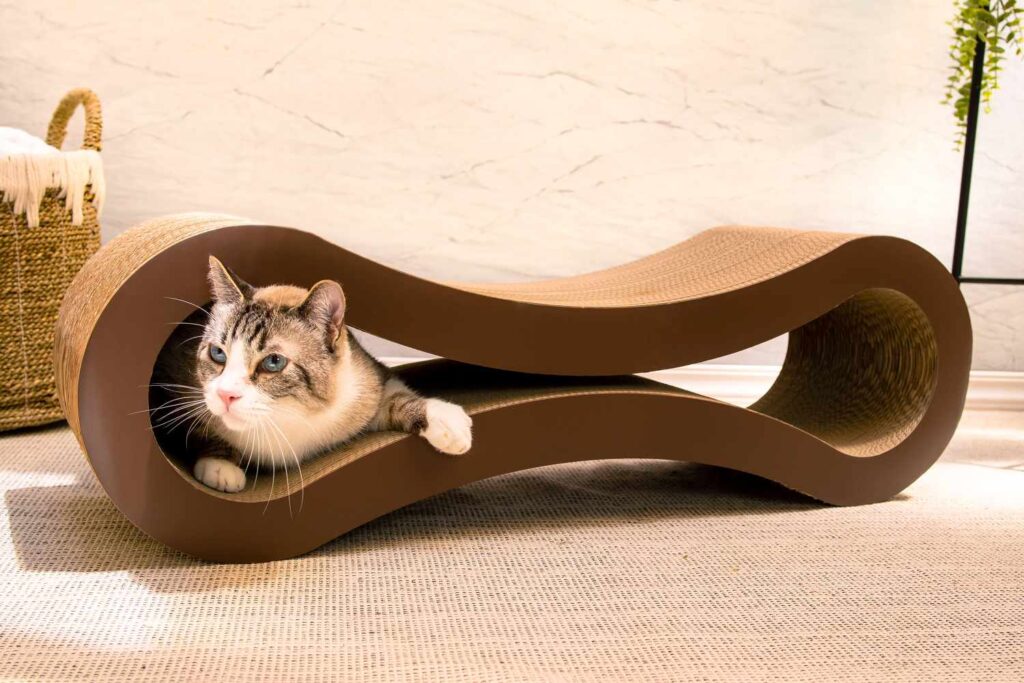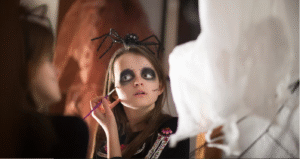
Why Your Cat Needs the Perfect Scratching Solutio
If you’ve ever come home to find your favorite sofa shredded or your curtains in tatters, you understand the importance of providing your cat with appropriate scratching surfaces. Cat towers and scratching posts aren’t just furniture accessories – they’re essential tools for your feline’s physical and mental well-being.
In this comprehensive guide, you’ll discover everything you need to know about choosing, placing, and maintaining the perfect cat tower for your home. We’ll explore different types of scratching posts, from tall cat scratching posts to innovative wall mounted scratching posts, and help you understand why investing in quality cat scratchers and towers is one of the best decisions you can make for your pet.
Whether you’re a first-time cat owner or looking to upgrade your current setup, this guide will equip you with expert knowledge to make an informed decision that both you and your cat will love.
Understanding Why Cats Scratch: The Science Behind the Behavior
The Natural Instinct
Scratching is an instinctive behavior that serves multiple purposes in a cat’s life. Wild cats scratch trees and other surfaces to mark territory, maintain claw health, and stretch their muscles. This behavior is so deeply ingrained that even declawed cats continue to go through the scratching motions.
Health Benefits of Scratching
When cats scratch, they’re performing essential maintenance on their claws. The scratching motion helps remove the outer sheath of the claw, revealing the sharp, healthy claw underneath. This process prevents ingrown claws and reduces the risk of infection.
Additionally, scratching provides cats with a full-body stretch that helps maintain flexibility and muscle tone. The stretching motion engages muscles from their paws all the way up through their shoulders and back.
Territorial and Emotional Aspects
Cats have scent glands in their paw pads, and scratching leaves both visual and scent markers that communicate information to other cats. Even indoor cats retain this territorial instinct, which is why they often scratch in prominent locations or near their sleeping areas.
From an emotional standpoint, scratching can be a stress-relief mechanism. Cats often scratch more when they’re excited, anxious, or trying to get attention.
Types of Cat Towers and Scratching Posts
Traditional Vertical Cat Towers
The classic cat tower remains popular for good reason. These tall cat scratching posts typically feature multiple levels, providing cats with vertical territory that satisfies their natural climbing instincts. Most towers combine scratching surfaces with perching areas, creating a multi-functional piece of cat furniture.
Key Features:
- Multiple scratching surfaces at different heights
- Perching platforms for observation and rest
- Varying textures (sisal, carpet, cardboard)
- Sturdy base for stability during vigorous scratching
Wall Mounted Scratching Posts
For homes with limited floor space, wall mounted scratching posts offer an excellent solution. These space-saving designs can be installed at the perfect height for your cat and often feature modular components that can be rearranged as needed.
Advantages:
- Space-efficient design
- Customizable height and configuration
- Easy to clean around
- Modern aesthetic appeal
Specialty Designs: The Cactus Cat Tree
The cactus cat tree has gained popularity as both a functional scratching post and an attractive home decor piece. These creative designs mimic the appearance of desert cacti while providing all the scratching and climbing opportunities cats crave.
Benefits of Cactus Cat Trees:
- Unique aesthetic that complements modern decor
- Multiple scratching angles and surfaces
- Conversation starter for guests
- Often more compact than traditional towers
Horizontal vs. Vertical Scratchers
While most cat towers emphasize vertical scratching, some cats prefer horizontal surfaces. The best cat tree options often incorporate both orientations to accommodate different scratching preferences.
Horizontal scratchers are particularly beneficial for:
- Senior cats with mobility issues
- Kittens learning to scratch
- Cats recovering from injuries
- Multi-cat households with varying preferences
Choosing the Best Cat Tree for Your Home
Size Considerations
When selecting cat scratchers and towers, size matters significantly. A scratching post should be tall enough to allow your cat to fully extend their body while scratching. For most adult cats, this means a minimum height of 32 inches, though taller options are often preferred.
Consider your available space and your cat’s size when making your selection. Large cats like Maine Coons need more substantial structures, while small animal can be accommodated with more compact designs.
Material Quality and Durability
The longevity of your cat tower depends heavily on material quality. Look for these features in high-quality options:
Sisal Rope: The gold standard for scratching surfaces, sisal is durable, provides excellent texture, and can withstand heavy use.
Solid Wood Construction: Posts made from real wood offer superior stability compared to particle board alternatives.
High-Quality Carpet: If choosing carpeted surfaces, ensure the carpet is tightly woven and securely attached to prevent unraveling.
Sturdy Hardware: All connections should use quality screws and brackets rather than simple staples or weak adhesives.
Stability and Safety Features
A wobbly cat tower quickly becomes an unused cat tower. Cats need confidence in their scratching surface to use it effectively. Look for:
- Wide, heavy bases that won’t tip during use
- Anti-tip straps for extra-tall models
- Smooth edges and surfaces to prevent injury
- Non-toxic materials and finishes
Multi-Cat Household Considerations
Homes with multiple cats require special consideration when choosing cat towers. Each cat should ideally have access to their own scratching surface to prevent territorial disputes. Consider:
- Multiple smaller towers rather than one large one
- Towers with several scratching surfaces at different levels
- Placement in different areas of the home
- Regular rotation to maintain interest
Installation and Placement Tips
Optimal Locations
The placement of your cat tower significantly impacts its usage. Cats prefer to scratch in areas where they spend time and in locations that allow them to mark their territory effectively.
Ideal Placement Areas:
- Near sleeping areas (cats often scratch upon waking)
- Close to food and water stations
- In main living areas where family gathers
- Near windows with good views
- Away from litter boxes but in accessible locations
Installation Best Practices
For wall mounted scratching posts, proper installation is crucial for safety and effectiveness:
- Locate wall studs for secure mounting
- Use appropriate hardware for your wall type
- Install at the correct height for your cat
- Ensure the mount can support dynamic loads (cats jumping and scratching)
- Leave adequate space around the scratcher for full-body stretching
Creating Scratching Zones
Consider creating dedicated scratching zones throughout your home rather than relying on a single cat tower. This approach better serves multi-cat households and provides backup options if your primary scratcher needs maintenance.
Maintenance and Care
Regular Cleaning
Keeping your cat tower clean is essential for your pet’s health and the longevity of the equipment. Different materials require different care approaches:
Sisal Surfaces: Vacuum regularly to remove loose fibers and debris. Use a stiff brush to maintain texture.
Carpeted Areas: Deep clean periodically with pet-safe cleaners. Replace heavily worn sections as needed.
Wood Components: Dust regularly and treat with pet-safe wood conditioner if needed.
When to Replace Components
Even the best cat tree will show wear over time. Know when replacement is necessary:
- Sisal rope that’s become smooth or heavily frayed
- Loose or wobbly components that can’t be tightened
- Carpet that’s completely worn through
- Any damage that could pose a safety risk
Extending Lifespan
Maximize your investment with these maintenance tips:
- Rotate the tower periodically to distribute wear
- Tighten hardware regularly
- Address small issues before they become major problems
- Provide multiple scratching options to reduce wear on any single piece
Training Your Cat to Use Their New Tower
Introduction Strategies
Even the perfect cat tower won’t be effective if your cat doesn’t use it. Proper introduction is key to success:
Placement First: Position the tower in an area your cat already likes to scratch or spend time.
Scent Transfer: Rub the tower with a cloth that has your cat’s scent, or use a small amount of catnip to create positive associations.
Positive Reinforcement: Reward your cat with treats and praise when they investigate or use the tower.
Patience: Allow time for your cat to become comfortable with the new addition to their environment.
Redirecting Unwanted Scratching
If your cat continues to scratch furniture after introducing a proper scratching post, don’t despair. Consistent redirection can solve this problem:
- When you catch your cat scratching inappropriately, gently pick them up and place them at the scratching post
- Reward them immediately if they scratch the post
- Make inappropriate surfaces less appealing with double-sided tape or aluminum foil
- Ensure the scratching post is more appealing than the furniture (better texture, better location)
Troubleshooting Common Issues
Cat Won’t Use the Tower: Try different textures, move the location, or add catnip to increase appeal.
Prefers Furniture: Make sure the tower is tall enough and stable enough for confident use.
Multiple Cats Fighting Over One Tower: Add additional scratching options throughout the home.
Case Study: Transforming Scratching Behavior in Multi-Cat Households
Sarah, a cat owner from Portland, struggled with destructive scratching in her three-cat household. Despite having a traditional scratching post, her cats continued to damage furniture and carpets throughout her home.
The Challenge
Three cats with different preferences:
- Luna (Siamese): Preferred vertical scratching on tall surfaces
- Max (Persian): Favored horizontal scratching due to his laid-back nature
- Zoe (Tabby): Liked to scratch in multiple locations throughout the day
The Solution
Rather than replacing their single scratching post with a larger cat tower, Sarah implemented a multi-zone approach:
- Main Living Area: A tall cactus cat tree that served as both functional furniture and conversation piece
- Bedroom: Wall mounted scratching posts at varying heights
- Hallway: Horizontal scratch pad near the entrance
- Home Office: Compact tower near Sarah’s desk where the cats liked to spend time
The Results
Within three weeks, furniture scratching decreased by 90%. Each cat found their preferred scratching location and style, reducing territorial conflicts. The varied approach accommodated each cat’s individual preferences while protecting Sarah’s furniture.
Key Takeaways:
- One size doesn’t fit all in multi-cat households
- Strategic placement matters more than size
- Variety in textures and orientations increases success rates
- Investment in multiple smaller solutions often works better than one large expensive tower
Health Benefits and Behavioral Improvements
Physical Health Advantages
Regular use of appropriate scratching surfaces provides numerous health benefits:
Claw Health: Proper scratching maintains optimal claw length and prevents ingrown nails that can lead to infection.
Muscle Maintenance: The stretching motion involved in scratching helps maintain flexibility and muscle tone, particularly important for senior cats.
Joint Health: Regular stretching can help prevent arthritis and maintain joint mobility as cats age.
Mental and Emotional Benefits
Beyond physical health, proper scratching outlets contribute to psychological well-being:
Stress Relief: Scratching releases tension and provides an outlet for excess energy or anxiety.
Territory Confidence: Having appropriate marking opportunities helps cats feel secure in their environment.
Natural Behavior Expression: Allowing cats to express natural behaviors reduces behavioral problems and increases overall happiness.
Behavioral Problem Prevention
Cats with adequate scratching outlets are less likely to develop:
- Furniture destruction habits
- Aggressive behaviors related to territorial disputes
- Stress-related health issues
- Attention-seeking destructive behaviors
Expert Recommendations and Professional Insights
Veterinarian Perspectives
Dr. Jennifer Martinez, a veterinarian with 15 years of feline practice experience, emphasizes the importance of scratching posts in preventive health care: “I see far fewer claw-related injuries and infections in cats whose owners provide appropriate scratching surfaces. It’s one of the simplest ways to maintain your cat’s health.
Animal Behaviorist Insights
Certified cat behaviorist Michael Chen notes: “The key to successful scratching post adoption is understanding that cats don’t just scratch to maintain their claws – they’re communicating, exercising, and managing stress. The best cat towers accommodate all these needs.
Breeder Recommendations
Professional cat breeders consistently recommend introducing scratching surfaces early in a kitten’s development. Maine Coon breeder Lisa Thompson explains: Kittens who learn to use proper scratching surfaces from an early age rarely develop furniture scratching problems as adults.
Budget-Friendly Options vs. Premium Investments
Entry-Level Solutions
For budget-conscious cat owners, effective scratching solutions don’t have to break the bank:
Cardboard Scratchers: Inexpensive and replaceable, though requiring frequent replacement
Simple Sisal Posts: Basic vertical posts that provide essential scratching surfaces
DIY Options: Homemade solutions using carpet remnants and wooden posts
Mid-Range Options
Mid-range cat towers offer the best value for most households:
- Combination of scratching surfaces and perching areas
- Better stability than budget options
- Reasonable longevity with proper care
- Variety of designs to match home decor
Premium Investments
High-end cat towers justify their cost through:
- Superior materials and construction
- Modular designs that can be reconfigured
- Exceptional stability and safety features
- Attractive designs that complement home decor
- Extended warranties and replacement part availability
Environmental Considerations and Sustainable Options
Eco-Friendly Materials
Environmentally conscious cat owners can choose towers made from sustainable materials:
Bamboo Construction: Fast-growing and renewable bamboo makes excellent cat furniture
Recycled Materials: Some manufacturers use recycled cardboard and plastics
Natural Sisal: Sustainably harvested sisal fiber provides durable scratching surfaces
FSC-Certified Wood: Wood from responsibly managed forests
Longevity and Waste Reduction
Investing in durable, repairable cat towers reduces environmental impact:
- Choose towers with replaceable parts
- Select designs that can be refreshed rather than completely replaced
- Consider modular systems that can grow with your needs
Conclusion:
Choosing the right cat tower or scratching post is one of the most important decisions you can make for your feline companion’s health and happiness. Whether you opt for a traditional tall cat scratching post, a space-saving wall mounted scratching post, or an eye-catching cactus cat tree, the key is finding a solution that matches your cat’s preferences and your home’s needs.
Remember that the best cat tree is one that your cat will actually use. Consider your pet’s size, scratching preferences, and favorite locations when making your selection. Don’t be afraid to start with a quality basic model and add additional cat scratchers and towers as you learn more about your cat’s preferences.
The investment in proper scratching surfaces pays dividends in protected furniture, better feline health, and a happier relationship with your pet. Your cat’s natural scratching behavior isn’t a problem to be solved it’s a need to be met with the right tools.
FAQs:
How tall should a cat scratching post be?
At least 32 inches tall for full stretching. Larger cats need 36-40 inches. Post should allow cats to stand on hind legs and stretch front paws without reaching the top.
What’s the best material for cat scratching posts?
Sisal rope is best – durable with excellent texture cats prefer. Natural wood, tightly woven carpet, and corrugated cardboard are good budget-friendly alternatives.
How do I stop my cat from scratching furniture?
Provide attractive alternatives near problem areas. Make furniture less appealing with tape or protectors. Always reward when cats use proper scratching surfaces consistently.
Do I need multiple scratching posts for one cat?
One good post can suffice, but multiple posts in different areas are beneficial. Cats prefer scratching near sleeping areas and main living spaces for convenience.
How often should I replace a cat scratching post?
Replace when unstable, surfaces worn smooth, or sisal heavily frayed. Quality posts last 2-5 years with maintenance; budget options need replacement every 6-12 months.
Can senior cats use tall cat towers?
Yes, but may need ramps or steps for safe access. Choose towers with multiple platform heights to prevent overexertion. Wall-mounted posts work well for seniors.
What’s the difference between a cat tree and a scratching post?
Scratching posts focus on scratching surfaces only. Cat trees combine scratching with perching platforms, hiding spots, and toys but require more space and cost more.
How do I introduce a new scratching post to my cat?
Place near areas where cats already scratch or spend time. Make appealing with catnip or scent transfer. Reward with treats and praise when they investigate or use it.





